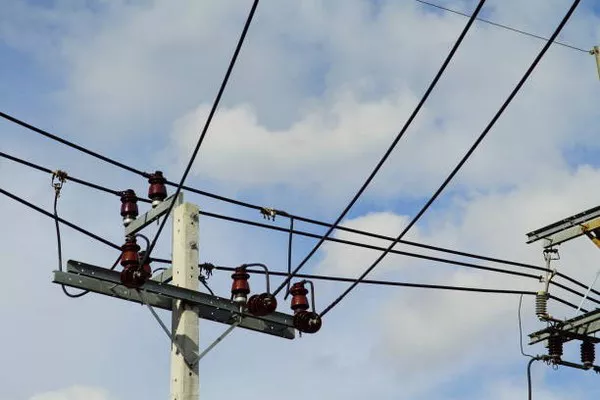Transformers play a pivotal role in the efficient distribution of electrical power. They facilitate the transmission of electricity from power plants to end-users by stepping up voltages for transmission and stepping down voltages for distribution. In the context of distribution networks, selecting the appropriate type of transformer is crucial for ensuring reliability, efficiency, and cost-effectiveness. This article aims to delve into the various types of transformers used for distribution purposes, their characteristics, advantages, and applications.
Types of Transformers for Distribution Networks:
Distribution Transformers:
Distribution transformers are the most common type used in distribution networks. These transformers step down high-voltage electricity from transmission lines to lower voltage levels suitable for distribution to residential, commercial, and industrial consumers. They typically operate at voltages ranging from 11 kV to 33 kV on the primary side and 400 V to 415 V on the secondary side for industrial applications and 230 V for residential applications.
Key Features and Advantages:
- Compact size and lightweight design for easy installation in urban and suburban areas.
- High efficiency, typically ranging from 95% to 98%, ensuring minimal losses during operation.
- Designed for continuous operation under varying load conditions.
- Reliable performance and low maintenance requirements, contributing to reduced lifecycle costs.
- Available in various configurations such as pole-mounted, pad-mounted, and underground, catering to diverse distribution requirements.
- Compliance with international standards and regulations for safety and reliability.
Applications:
- Residential neighborhoods
- Commercial complexes
- Industrial estates
- Rural electrification projects
Pad-Mounted Transformers:
Pad-mounted transformers are a specific type of distribution transformer designed for outdoor installation on concrete pads. They are commonly used in urban and suburban areas where space constraints or aesthetic considerations prohibit overhead installations. Pad-mounted transformers are available in single-phase and three-phase configurations, with ratings ranging from a few kVA to several MVA.
Key Features and Advantages:
- Robust construction and sealed enclosure for protection against environmental factors such as moisture, dust, and vandalism.
- Reduced footprint compared to traditional pole-mounted transformers, making them ideal for congested areas.
- Easy accessibility for maintenance and inspection, with hinged doors providing access to internal components.
- Enhanced safety features, including ground-fault protection and overload protection devices.
- Compatible with various distribution systems, including underground networks and substations.
- Can be equipped with advanced monitoring and remote control systems for improved asset management and fault detection.
Applications:
- Urban and suburban distribution networks
- Shopping malls
- Office complexes
- Residential developments
Pole-Mounted Transformers:
Pole-mounted transformers are another common type of distribution transformer installed on utility poles or towers. They are widely used in rural and suburban areas where overhead distribution lines are prevalent. Pole-mounted transformers are available in single-phase and three-phase configurations, with ratings typically ranging from a few kVA to a few hundred kVA.
Key Features and Advantages:
- Elevated placement on utility poles for enhanced safety and protection against flooding and vandalism.
- Simple installation and maintenance, with easy access for repair and replacement.
- Versatile mounting options, including single-pole, double-pole, and H-frame configurations, to suit different distribution line layouts.
- Cost-effective solution for extending distribution networks to remote or sparsely populated areas.
- Compatible with overhead distribution lines and can be easily integrated into existing infrastructure.
- Can be equipped with lightning arrestors and surge protection devices for enhanced reliability.
Applications:
- Rural electrification projects
- Agricultural areas
- Small communities
- Temporary construction sites
Substation Transformers:
Substation transformers are used in distribution substations to step down high-voltage electricity received from transmission lines to lower voltage levels for further distribution to consumers. These transformers are typically larger and higher capacity than distribution transformers, with ratings ranging from a few MVA to several hundred MVA.
Key Features and Advantages:
- High efficiency and reliability, essential for ensuring uninterrupted power supply to consumers.
- Designed for operation in indoor or outdoor substations, depending on space availability and environmental conditions.
- Customizable configurations to meet specific voltage and load requirements of the distribution network.
- Equipped with advanced monitoring and protection systems for real-time performance monitoring and fault detection.
- Modular design for easy expansion and upgrades to accommodate future growth in demand.
- Compliance with stringent safety standards and regulations for substation equipment.
Applications:
- Distribution substations
- Industrial parks
- Large-scale commercial complexes
- Critical infrastructure facilities
Conclusion:
In conclusion, the selection of the appropriate transformer for distribution purposes depends on various factors, including voltage requirements, load characteristics, space constraints, and environmental conditions. Distribution transformers, pad-mounted transformers, pole-mounted transformers, and substation transformers each offer unique features and advantages suited to specific applications within distribution networks. By understanding the capabilities and limitations of each type of transformer, utility companies and electrical engineers can make informed decisions to optimize the performance, reliability, and cost-effectiveness of their distribution systems.

